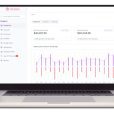The disrupted nature of today’s business environment can create an ecosystem of diverse systems with multiple data types from various data sources, including physical and digital. Often businesses are sitting on huge amounts of valuable data that they struggle to use productively.
Although most information is now digital, many physical records are still housed off-site and often departments within an organisation can do things slightly differently. This lack of standardisation, with messy, unstructured formats and legacy paper archives creates inefficiencies that can negatively impact the ability to gain critical business insights and can introduce legal and audit risks.
Additionally, these inefficiencies can create frustrations and limit productivity, creating frictions within an organisation and its teams. A digital-forward, data-driven approach to content management and data-analytics has the potential to address these issues. It is important to note that any transition can occur in a phased manner, typically a day forward versus a legacy approach is the most effective.
Today, artificial intelligence (AI) and machine learning (ML) technologies are now playing a critical role in digital transformation, for both physical and digital data. As machine learning algorithms become smarter and faster, we can expect to be able to unlock value from more types of information in this way. Real-time video analytics, for example, is already a reality and will become a bigger feature as more organisations develop these capabilities.
The availability and accessibility of subscription, on-demand and in-the-cloud services makes it much more simple and straightforward for businesses of any size to become digital leaders and to extract the maximum possible value from their data. So, how can they achieve this?
Enterprise wide content strategy
Although new technologies, such as AI and ML, can play a significant role in the accessibility of data, there are such a vast number of applications now associated with content and information management that organisations have often implemented more than one across a business.
Counter productively, this can create a feeling of lack of visibility and control for employees, creating a new set of problems. Instead, the implementation of a single system, integrated across an organisation, streamlines the process and provides users with the ability to access and search data from a single source.
Consolidating information in this way provides full visibility into the data an organisation holds and enables employees to more effectively use and leverage its value across the business.
Cloud-based content services
Too often, companies struggle to meet business demands when using outdated data centres. The systems of governance companies used to rely on have become outdated and inefficient, liable to create more problems than solutions. The transition to remote and hybrid working has further complicated the data dissemination process. However, turning to cloud management tools can help organisations to best serve both employees and clients.
In addition to providing a user-friendly and more efficient way of managing and analysing data, in-turn providing cost-efficiencies, the digitisation of the collection, storage and processing of data also offers a secure and protected system as well as constant professional support.
Investing into security measures to keep up with the demands of a hybrid workforce is likely to be extremely costly. Whereas, the implementation of a cloud management platform delivers a long-term retention strategy for an orgnanisation’s valuable data. Instead of relying on outdated storage tools, where data can be and is easily lost, cloud infrastructure lends itself to readily available data and enterprise safety. Data governance establishes the centralised location of data, with a provider that protects data and plans for unexpected dilemmas.
Metadata
Maximising metadata in records and data retrieval is an often overlooked aspect of records management. To maintain the principle of accessibility, records need to be accessible which is where metadata can be leveraged – maximising the potential for retrieval of both electronic and physical data.
An effective metadata-based retrieval system must begin with an effective categorisation and classification (taxonomy) approach. Established at an enterprise level it must also provide flexibility for nuances that exist across different business locations and divisions.
Metadata then becomes the most effective way to retrieve both records and information. Not only are search terms consistent, but also relevant. Although search is just one part of metadata’s effectiveness, it can also combine with browsing folder structures, making it incredibly effective when looking for a record.
Much of this seems relatively intuitive for electronic records, information management and data analysis. However, the integration of folder structures and metadata is often overlooked. With an index of physical records in electronic form, the same principles for maximising metadata in records retrieval apply to achieve consistency with the principle of availability.
Ultimately, the future of data is not about its management but about its enablement. Leveraging technologies and implementing digitally led systems is not enough if this only supports the management and storage of data,. Instead, businesses need to be implementing systems that offer the tools and ability to truly collaborate with the data they hold. Moving from a place of recording business data towards a place of enabling and empowering employees to easily access and work with data, to analyse and integrate it and incorporate it into new business ideas and strategies is imperative for business success in the future of work.













Leave a Comment
You must be logged in to post a comment.